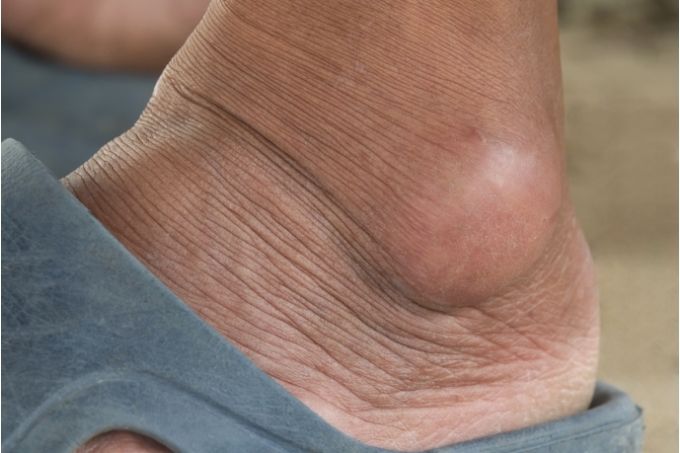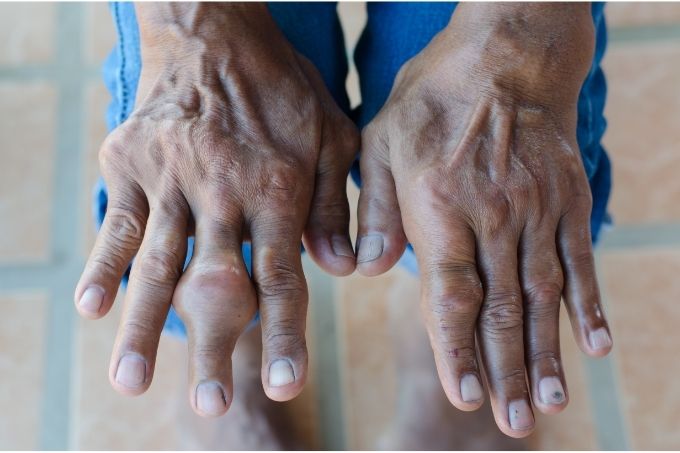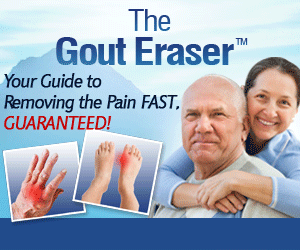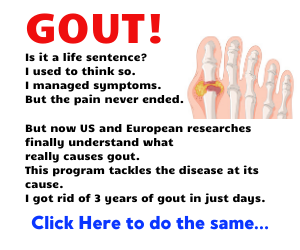
It is very likely that you have come across a gout patient. The reason is, gout is top among the most common forms of inflammatory arthritis. It is a disease that manifests on joints but is most evident on the feet and big toe. But what does gout feel like exactly? We offer you answers and helpful insight as to how you may tell if you suffer from gout. Additionally, we will provide you with important information about its causes and management.
What does gout feel like?
With gout, you will suffer sudden periods of intense, sharp, and throbbing pain. The affected joint may also feel tender and swollen. The affected joint may feel hot with a gout attack, and any pressure on it, even the slightest, feels intolerable. Some may describe the joint as one that is on fire. Gout sensations, however, vary from one patient to another.
A gout attack typically peaks 12-24 hours after it starts. It will then resolve over several days. For some patients, flare-ups are very frequent, while for others, they are much less frequent. A gout flare may cause a fever and may appear like an infected joint. If you do not undergo any treatment, recovering from acute gout or gout flares may take one or two weeks.
Attacks may occur on the same joint repeatedly, but other people may experience them in different joints. In between attacks, you will generally have no symptoms. Gout that goes untreated puts an individual at risk of developing chronic gout. It is also risky for longer-lasting and persistent attacks. Chronic gout may cause joint deformity and damage. In such cases, it may be mistaken for other inflammatory conditions like rheumatoid arthritis. Gout attacks may occur once or twice a year or even very few times ever.
With gout, hard deposits of uric acid referred to as tophi may occur. They are swollen lumps that appear like knots on a tree trunk. The deposits grow and are evident under the skin, particularly around cartilage. They may appear on top of the ear or around joints. If they are not treated, tophi can cause bone damage and may disfigure affected joints permanently. They typically do not hurt, but they may cause painful inflammation.
With gout, the most common indications are:
- Sharp joint pain.
- Inflammation.
- Redness on the affected joint.
- Joint discomfort.
- Lessened range of joint motion.
What causes Gout?
Gout comes about when the blood has excess uric acid. The body breaks down compounds referred to as purines to produce uric acid as the by-product. The body naturally makes purines. They are also found in certain foods. The kidneys are responsible for filtering out and eliminating uric acid.
Usually, uric acid is eliminated from the body during urination. However, there are situations in which the uric acid quantities are too high for efficient elimination. In other cases, the kidneys may not be efficiently functioning due to failure. It is during these scenarios that any excess uric acid is not gotten rid of. With its build-up, sharp urate crystals can form in a joint to cause inflammation. This is what is referred to as gout.
It is important to note that there are people who may have high levels of uric acid but not develop gout or have any symptoms. This is referred to as asymptomatic hyperuricemia.
Suggested article: 15 Triggers of Gout – What Causes Gout?
Other Risk Factors
A uric acid build-up is the leading cause of gout. However, the condition may also result from diuretic medications, dehydration, genetics, and thyroid issues. Metabolism disorders can also increase the risk of gout- diabetes, hypertension, chronic kidney disorders, and obesity. The consumption of high purine foods such as alcohol, seafood, red meat, and fruit sugar(fructose) elevates the risk. Postmenopausal women and middle-aged men are also at a greater risk than the general population.
Joints affected by gout
Gout can affect any joint. However, depending on which one(s) suffers a flare, the pain and inflammation effects may bring about variable issues. The pain that results from gout is due to the body launching a defense mechanism against the urate crystals in the affected joint.
The most vulnerable joints include:
- The big toe- you may feel a sudden pain, the toe may appear red, and may feel tender. It becomes very difficult to put weight on it or even wear shoes.
- Ankle– you may feel a burning or tingling pain. It may also swell and prevent walking.
- Elbow– the radiating pain can prevent arm movement. The elbow protrudes.
- Knee– the burning pain can restrict leg movement.
- Mid-foot- you may feel a tingling sensation that is followed by increased pain which makes it challenging to put on pressure or weight.
- The fingers.
- Wrist.
- Shoulder (very rarely attacked).
Diagnosis
If you suffer from any of the mentioned symptoms and suspect gout, you must ascertain the same with a professional or joint specialist. To make an informed judgment, they will assess your symptoms and perform specific tests. They will also ask you about the duration or frequency of your symptoms. They may carry out a uric acid level blood test.
To see the presence of serum urate crystals in the affected joint, they may extract the synovial fluid from the joint. Joint imaging may be performed using an X-ray, ultrasound, or MRI. Based on your symptoms and severity, diagnosis may be fast with minimal testing. Other cases may require following up with additional tests.
Suggested article: How is Gout Diagnosed – The List of 6 Techniques

Treatment and Prevention
Prompt gout treatment is essential to prevent the development of chronic gout.
Medication
Pain that results from gout will generally be treated using two ways;
- The administration of medication that relieves short-term gout attacks. Medicines that can help treat a gout flare and resolve it faster include; colchicine, anti-inflammatory drugs, and glucocorticoids.
- The administration of medication that regularly lowers uric acid levels to prevent reoccurrence. Drugs such as allopurinol, febuxostat, and probenecid may be used. Allopurinol is used chiefly to lower high uric acid levels.
Those with chronic gout that does not respond to other drugs may use pegloticase (krystexxa).
Suggested article: Top 7 Gout Medication – List of Medicines Used to Treat Gout
Surgery
Typically, gout is treatable without surgery. However, surgery may be considered when the condition causes joint damage, tears tendons, and does not react to the medication. Particularly with tophaceous gout, surgery may be done to remove the tophi, through the performance of joint fusion or joint replacement.
Other prevention tips are:
- Limiting alcohol intake.
- Limiting the consumption of high-purine diets.
- Working to maintain a healthy weight.
- Regular exercising.
- Hydration.
- Avoiding or quitting smoking.
- Those with high-risk factors such as metabolic disorders should seek treatment early enough.
Final Thoughts
Gout is a condition that should not be ignored because it may become chronic and cause more severe conditions. If you have previously wondered, what does gout feel like? We hope you are now familiar with the most common of its symptoms. Gout may develop due to factors other than high uric acid levels. As soon as you suspect you may have gout, seek professional help for an accurate diagnosis. Gout is manageable and can be successfully treated. The doctor will make an accurate diagnosis, provide a prescription, and guide you through treatment and management.
Suggested articles:
– Pseudogout vs Gout – Similarities, Differences & Medical Solutions
– How Do You Get Gout? – 10 Causes & Risk Factors
– Walking with Gout – Should I Walk with Gout?
The Gout Eraser™: The all-natural guide for permanent gout removal
The Gout Eraser™ is a short, to the point guide on how to reverse gout symptoms without ever leaving your home. The guide goes into extensive detail on exactly what you need to do to safely, effectively and permanently get rid of gout, and you are GUARANTEED to see dramatic improvements in days if not hours.
To learn more about The Gout Eraser™ system, check out the following free video presentation: The Gout Eraser™





